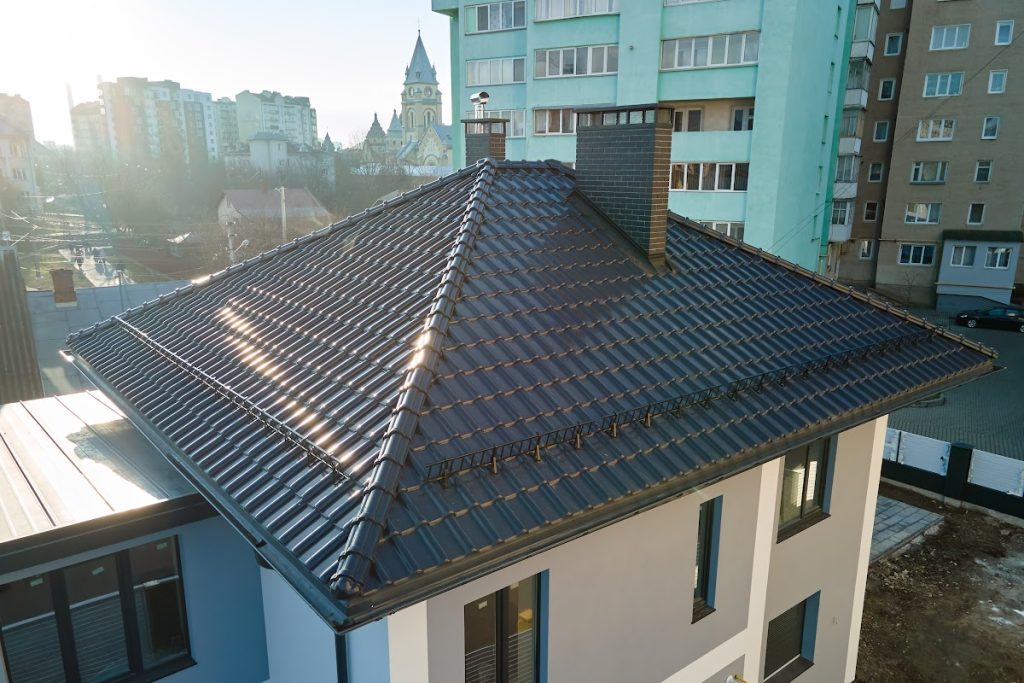Thunder rattles the windows, a rogue drip tags your ceiling, and you picture $30,000 evaporating into soggy drywall and warped floors. Or that same storm can pound away while your house wears Verea’s kiln-fired, hurricane-rated clay tiles—unmoved, un-leaking, and utterly unfazed. Your choice.
But this kind of protection isn’t just modern engineering—it’s centuries in the making.
 Roof Tiles: A Blend of History and Modern Ingenuity
Roof Tiles: A Blend of History and Modern Ingenuity
From Ancient Greek imbrex and tegula systems to the terracotta barrel tile roofs that color seaside Spanish towns, roof tiles have sheltered people for thousands of years. Today’s options marry that Old-World charm with advanced underlayments, UV-stable pigments, and interlocking roof tile profiles that shrug off wind gusts. When you install a tile roof, you aren’t just buying protection; you’re joining a lineage of architecture that has proven itself through centuries of rain, sun, and snow.
Types of Roof Tiles (and Why They Matter)
Walk into any roofing showroom and you’ll see an array of materials, each promising something different. Below is a quick snapshot of the major categories so you know what to ask your contractor about.
- Clay Roof Tile: Kiln-fired clay offers unrivaled color permanence. With proper installation and care, clay tiles—like those from Verea—can last 75 to 100 years or more. Grade 1 clay, like the pieces crafted by Verea Clay Tile’s Spanish “S” profile, meets the strictest ASTM standards for water absorption and break strength.
- Concrete Roof Tiles: Made of sand, cement, and water, concrete tiles imitate slate or wood shake while remaining cost-effective. They are heavier than clay, so confirm your roof structure can handle the load.
- Natural Slate: Split from quarried stone, slate tiles boast dramatic color veining and fireproofing. They routinely outlive the house beneath them but require reinforced framing.
- Synthetic & Composite Tiles: These lightweight panels mimic wood shingle, flat shingle tiles, or even metal roof tiles. They offer ease of installation but vary widely in quality, so check the warranty.
Inside the Manufacturing Process
Ever wonder how raw clay ends up on a Miami loading dock–engineered to meet Miami-Dade County’s rigorous standards for high-velocity hurricane zones? Each Verea tile begins its life in Galicia, Spain, where it is pressed and shaped, then kiln-fired past 1,800 °F to vitrify it—locking in color and producing a tile that exceeds ASTM standards for strength and durability. From there, the tiles cross the Atlantic to Verea’s 200,000-square-foot Miami distribution hub, so contractors anywhere in the U.S. can get stock in days, not months. Concrete still has to cure for weeks, and slate must be hand-split, which is why a Verea clay roof routinely outlasts asphalt, concrete, and pretty much everything in between.
Installation: Why Details Matter
A tile roof is only as good as its installation. Key points your contractor should never skip:
- Underlayment Quality: A high-grade, water-resistant membrane is the final safety net. Cheap felt won’t cut it on a pitched roof with heavy seasonal rain.
- Proper Fastening: Stainless or hot-dipped galvanized nails prevent corrosion. High-wind zones may also call for screws or clips on every ridge and valley.
- Weight Distribution: Clay and concrete barrel tiles weigh more than asphalt shingles. Confirm truss sizing meets local building codes before delivery day.
- No Walking on Tiles: Clay and slate can crack under point pressure. Pros use padded boards or scaffolding to spread weight evenly.
Cutting corners on any of these steps invites leaks, high repair bills, and shattered curb appeal.
Durability: The Quiet Superpower of Tile Roofs
There’s a reason real-estate listings highlight ‘new tile roof’: a well-installed tile roof can outlast three or four asphalt replacements. Clay and slate resist decay, insects, and UV exposure. Concrete tiles shrug off hail better than wood shingle or metal panels. And all of them are non-combustible, offering an extra buffer in wildfire-prone regions.
Sustainability and Environmental Impact
If you’re chasing a smaller carbon footprint, a tile roof is an easy win. Clay and slate come straight from the earth and return there harmlessly after 100 years or more. Even concrete tiles can be ground into aggregate for new construction. Verea’s kiln lines recycle heat, and their tiles are inert, meaning no off-gassing or toxic run-off during storms.
Market Trends Shaping Tomorrow’s Roofs
- Interlocking Clay Roof Tiles: Single-piece designs like the Spanish “S” combine cap and pan, trimming material waste and labor hours.
- Naturally Cooler Roof Systems: Verea clay tile systems are inherently cooler than shingle, slate, concrete, or metal alternatives. Thanks to the natural thermal insulation properties of clay and the ventilated design of tile roofing systems, they help reduce heat transfer into the attic, lowering cooling costs without needing special reflective coatings.
- Customization: Consumers now expect a variety of colors and rustic finishes, from old-world terra cotta to charcoal slate, without special orders.
 Choosing the Right Roof Tile for Your Home
Choosing the Right Roof Tile for Your Home
Narrowing your options starts with architecture. Mediterranean or Spanish-style homes shine with two-piece barrel roof tile. Contemporary designs often lean on flat tiles for clean sightlines. Climate matters, too: heavy snow loads steer homeowners toward low-porosity clay or synthetic slate, while coastal regions benefit from salt-resistant profiles.
Budget rounds out the conversation. Slate delivers lifelong luxury but costs more upfront. Concrete tiles land in the middle. Verea’s interlocking clay profiles hit a sweet spot of price, durability, and elegance.
Frequently Asked Questions
How many roof tiles will I need?
The number of tiles depends on your roof’s square footage and the specific tile profile. Your contractor will measure squares (100 sq ft sections) and order 5–10 percent extra for cuts and breakage.
Are tiles heavier than asphalt shingles?
Yes. Clay and concrete can weigh three to four times more. Always verify your framing meets code.
Can tile roofs go on low-slope or flat roofs?
Traditional tiles work best on a pitched roof of 3:12 or greater. For flatter pitches, look at metal roof tiles or a membrane system.
What’s the maintenance schedule?
Aside from an annual inspection, tile roofs need little attention. Replace cracked tiles and clear moss or debris from valleys and ridges.
Do tile roofs come with a warranty?
Reputable manufacturers, including Verea, offer long warranties. Always register your roofing products and keep documentation. Verea tiles are guaranteed to never fade, unlike shingles, metal, or concrete.
Why a Tile Roof is Worth Every Penny
When you weigh the upfront cost of a tile roof against its lifespan, energy savings, fireproof qualities, and undeniable curb appeal, the math often tilts in favor of tile. Add peace of mind—no more midnight ladder rescues—and the choice becomes even clearer.
Ready to explore high-quality clay roof tile options? Browse Verea Clay Tile’s complete lineup of flat, barrel, and Spanish “S” profiles, or dive into their photo gallery for inspiration. If you have questions about installation, color choices, or local distributors, the Miami-based team is just a call or email away at +1 (786) 641-9154 or info@vereaclaytile.com.
Protect your memories, lower your energy bills, and give your home the timeless look it deserves—all with a roof tile system built to last.


 Roof Tiles: A Blend of History and Modern Ingenuity
Roof Tiles: A Blend of History and Modern Ingenuity Choosing the Right Roof Tile for Your Home
Choosing the Right Roof Tile for Your Home